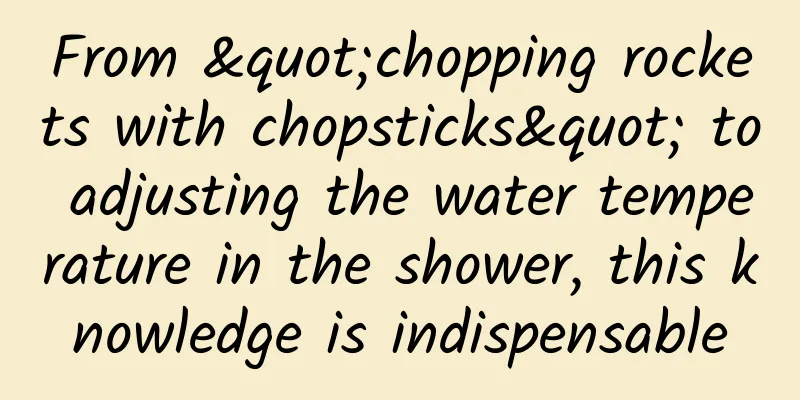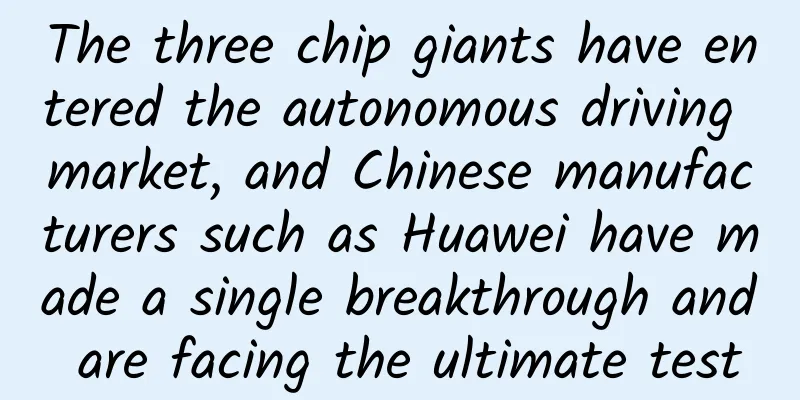From "chopping rockets with chopsticks" to adjusting the water temperature in the shower, this knowledge is indispensable

|
At about 7:32 a.m. local time on October 13 (20:32 p.m. Beijing time on the same day), in the morning light at the Starport launch site in Texas, the Super Heavy booster broke through the heavy clouds and "slowly" fell at a speed of 2,000 km/h, leaving a long trail of clouds. The Raptor engine flickered with bright tail flames, and the booster gradually slowed down. Amid the exclamations of the audience, the nearly 200-ton rocket body "gently" landed on the tower. This is the fifth test flight of the new generation heavy-lift rocket "Starship" of SpaceX, and it verified for the first time the "chopsticks-gripping rocket" technology - successfully capturing and recovering the first-stage booster of the rocket in mid-air through the launch tower's robotic arm. This method can reduce the weight of the "Starship" and reduce the launch cost, while helping to recover and reuse the boosters faster and increase the launch frequency. The "chopsticks holding the rocket" is called an "unprecedented" new rocket recovery method by the US media. It requires extremely high precision and hovering ability of the rocket flight control system. A slight mistake may cause the rocket to topple or explode on the launch tower. Elon Musk, founder of SpaceX, previously predicted that the success rate of recovery in this test flight was only 50%. In fact, it is better to say "holding the rocket on chopsticks" rather than "holding the rocket with chopsticks". The technical difficulty does not lie in the dexterity and power of the robotic arm, but in how to accurately hover the huge booster between the two "chopsticks". The theory of automatic control plays an indispensable role in this process. Automatic control means "using external equipment or devices (controllers) to make a certain working state or parameter (controlled quantity) of a machine, equipment or production process (controlled object) automatically operate according to a predetermined rule without direct human involvement." This may sound a bit confusing, but in fact, we are not unfamiliar with "control": "Use computers to control spacecraft", "Genes control heredity", "This patient's cancer is out of control"... Cybernetics, as a methodological interdisciplinary subject, its vision and worldview have long been deeply integrated into and shaped our lives - whether it is starship rockets, neuroscience, artificial intelligence, or the Internet, philosophy, and war. The history of cybernetics is a history that crosses cultural, disciplinary, and social boundaries. In 1948, Norbert Wiener, a pioneer in cybernetics, mentioned in his groundbreaking work Cybernetics that the word Cybernetics comes from the Greek word κυβερνήτης, which means "helmsman". This may have a deeper meaning: the helmsman responds to disturbances such as wind and tides, corrects "errors" and keeps his ship on course. Today, with the undercurrents of science and technology, humanities and society, we need to correctly grasp the relationship between people and themselves, machines, and even society more than ever before. The control theory learned in the engineering automation major at university constitutes the core foundation of cybernetics [control theory can be seen as a subset of cybernetics, the latter of which has a larger extension]. However, the mathematical tools used in control theory are daunting and give people an abstract and profound impression; especially beginners, who are often confused by a large number of terms such as "complex frequency domain", "pole", "filtering", "system decoupling", "motion stability", etc. At the same time, control theory itself also faces many limitations and challenges. In view of this, this article is aimed at readers outside the field. It will focus on specific examples, discuss the concepts and methods of automatic control theory, and introduce what kind of discipline it is. Written by Cai Ning (Associate Professor, Beijing University of Posts and Telecommunications) The vision of the development of science and technology in the field of electronic information is to continuously promote technological progress, so as to eventually realize an "intelligent body" that can work autonomously, or a "super intelligent body" composed of many intelligent bodies working together. So what capabilities should an ideal intelligent body have? It can be summarized as follows: * Reasoning: Logically deriving conclusions from known judgments according to certain rules. * Modeling (learning): Summarizing patterns and acquiring knowledge through perceived information. * Sensory: Perceiving information through sensors. * Memory: the storage and retrieval of information. * Movement: Able to move independently with balance and coordination. * Emotion: For autonomous agents, emotions determine the motivation for behavior. * Communication: Different intelligent agents can communicate with each other or with humans. Each discipline and direction in the field of electronic information technology is dedicated to solving specific problems in different aspects. Among them, the main problem of automatic control is motion. Here, "motion" is broad, not only referring to external displacement movement, but also including changes in internal state. Dynamic Systems and “Feedback” Specifically, the goal of automatic control is to analyze dynamic systems, understand their motion laws, and then achieve the desired motion by adjusting the system or designing a controller. The basis of traditional automatic control is the mathematical model of dynamic systems. The so-called dynamic system refers to those objects in reality that change over time, and the state at the current moment is affected by the cumulative influence of all past moments, and have "inertia" and "memory". The mathematical model of dynamic systems involved in automatic control is mainly described by ordinary differential equations and difference equations. In reality, there are examples of dynamic systems everywhere, from robotic arms, pendulums to airplanes, from rivers, sand dunes, biological populations to atmospheric systems, from computer networks, economic systems to human society, and even to galaxies in the universe... The states of these systems will change over time. For example, when the circuit contains inductor and capacitor energy storage elements, it is a dynamic system: after the RC series circuit is connected to the constant voltage source, the capacitor element is charged, and its voltage gradually increases, and it takes a transient process to reach a stable value; but if there is no energy storage element, it does not belong to a dynamic system, because the circuit state is only determined by the instantaneous relationship represented by the algebraic equation, and the response at any moment is only related to the excitation at the same moment, and is not affected by the accumulation of past moments. The mathematical model of a dynamic system of autonomous motion is as follows: Here x = x(t) is a vector, called a state vector, which represents the motion state of the system over time; is the derivative of x with respect to time, indicating the trend of state change. This is a standard state space equation. It can be seen that the system depends on the specific form of the function f(t, x), including structure and parameters. The system structure refers to the function type of f(t, x), and the system parameters refer to the exact values of some coefficients in the function expression. In order to achieve the control target, a controller needs to be designed. The basic mechanisms of controller design mainly include "negative feedback" and "parallelism". Among them, the "negative feedback" mechanism is the soul of automatic control and is a necessary prerequisite for any effective automatic control system. You can do an experiment: a person is blindfolded and then tries to walk in a straight line. You will find it difficult to succeed. The reason is that the human body, as an efficient automatic control system, needs to constantly compare the feedback information with the real-time position and dynamically correct the motion trajectory in the process of moving towards the target. Blindfolding is equivalent to losing the feedback mechanism. In the process of movement, errors are inevitable. Without a feedback mechanism, the errors will become larger and larger, and cannot be corrected, and ultimately the desired control target cannot be achieved. It is generally recognized in the academic community that the application of modern automatic control technology in industry began with the speed governor of Watt's steam engine. Watt found that the speed of the steam engine was unstable, the steam fluctuated, and the speed was fast and slow, so he used a centrifugal governor to solve the problem, as shown in Figure 1. The rotation of the longitudinal axis drives the ball to move in a circle, forming a conical pendulum. The higher the speed, the greater the centrifugal force, and the greater the angle between the ball connecting rod and the longitudinal axis. The valve opening is then controlled based on this angle, so that when the angle becomes larger, the steam flow is reduced, and when the angle becomes smaller, the steam flow is increased. In this way, the speed of the steam engine is stabilized by introducing a negative feedback mechanism. (The claim that Watt "invented" the centrifugal governor is widely circulated, but this is a misunderstanding. Before the steam engine, centrifugal governors had been widely used in windmills. - Editor's note) Figure 1 Watt's centrifugal governor How to adjust the bath water temperature? So, as long as the system has a negative feedback mechanism, can it achieve effective control? Life experience can tell us: not necessarily. Everyone knows that it is a technical job to hold a stick upright with one hand and open the palm, which requires constant feedback adjustment. But feedback alone is not enough. The strength of the feedback is also very subtle. If the strength is too small or too large, it will easily fall over. When taking a shower with an old-fashioned water heater, the water temperature is controlled by manually adjusting a mechanical valve. How to adjust the water temperature is also a technical job. The water temperature often fluctuates, the valve is opened and closed, and it takes a long time to adjust it properly. Sometimes it even gets worse. This scene is actually a regulator system, which is a typical automatic control system. It includes a controlled object, a measuring mechanism, a controller and an actuator, and has a negative feedback mechanism. The controlled object here is the hot and cold water pipeline system, the measuring mechanism is the human skin, the controller is the human brain, and the actuator is the human hand and the regulating valve. The following is a simple simulation to demonstrate the adjustment process of a temperature control system controlled by a regulating valve in a hypothetical situation (not necessarily a bath). The system simulation tool used is the most commonly used Simulink. Figure 2: An automatic control system simulation structure The "Transfer Fcn" module in Figure 2 represents the hypothetical controlled object model. The model is in the form of a transfer function, that is, the polynomial fraction in the module. Readers can regard it as a black box without considering the details. Its input signal is the valve opening, and the output signal is the actual temperature. "Step" represents the expected temperature, which we set to 40. The expected temperature minus the observed actual temperature is the feedback error signal, which is the basis for control and corresponds to the output of the "Subtract" module in Figure 2. Obviously, the most intuitive and natural control strategy is to adjust the valve opening according to the feedback error. When the error is positive, it means that the temperature is low, and the water valve should be adjusted to the hot water direction. The larger the error, the larger the valve is opened. Conversely, if the error is negative, the water valve is adjusted to the cold water direction. In short, the opening angle of the valve is proportional to the error. This is actually the so-called "proportional control". "Gain" represents the proportional amplification of the signal, which is generally translated into "gain" in Chinese. When the proportional gain is 1, the output result displayed by the "Scope" module is shown in Figure 3 Figure 3 Output result when proportional gain is 1 It can be seen that after repeated adjustments, the temperature tends to be stable, and the dynamic characteristics of the system do not seem to be too bad. However, an unexpected weird phenomenon occurred: there is a significant error between the result and the expectation, which cannot be eliminated. This is called "static error" in the terminology of control theory. Increasing the proportional gain to 10 is equivalent to using a larger valve opening to cope with the temperature difference. The result is shown in Figure 4: Figure 4 Output results when the proportional gain is 10 In this case, the temperature will still stabilize, but the oscillation amplitude and frequency will increase, and the dynamic characteristics will deteriorate. However, the static error will be much smaller and is no longer so obvious. The above is an ideal proportional control. However, reality is always different from ideal. For the bath water temperature control system, the actual controller of the adjustment system is a human, and everyone has a reaction time. Assuming it is 0.1 seconds, it is considered a very fast reaction. This is equivalent to adding a 0.1 second delay link in the system feedback loop, as shown in Figure 5. Figure 5. Control system with feedback loop delay The running results are shown in Figure 6: Figure 6 Output result of feedback loop with delay Just adding a seemingly insignificant delay link makes the system unstable. It can be seen that control that relies solely on feedback mechanisms is not necessarily reliable. Proportional, Derivative, Integral and "PID Control" The above introduces a very simple feedback control system. The simple feedback control idea comes from intuitive common sense. However, facing the actual system control problem, this is far from enough, and all kinds of unexpected problems will be encountered. Living in today's world, we can imagine that engineers in Watt's era must have often faced endless strange problems and phenomena in practice, which made them crazy and at a loss. In fact, Watt's centrifugal governor really cannot remain stable under any working conditions. In some cases, the governor may aggravate the system oscillation, causing the steam engine speed to speed up and slow down. Today, we already have a complete set of theoretical systems that can answer many "strange questions" and effectively help us analyze the basic laws of motion of dynamic systems, explain motion phenomena, and design controllers to solve various practical problems. It is very difficult for a person to hold a wooden stick upright. Because it is an inverted pendulum, it is an inherently unstable system that will fall over if it shakes. However, using the knowledge and methods of automatic control, it is easy to solve such balance problems with electromechanical systems, and it can ensure absolute reliability. For undergraduate students majoring in automation, it is a very simple thing to design and make a two-wheeled balance car by themselves, and it does not require any advanced technology. Control theory tells us that if in the control system discussed above, when determining the valve opening, not only the size of the error but also the speed of error change is considered, this is equivalent to introducing damping. Damping can improve dynamic characteristics. If the damping is reduced, the dynamic response becomes more "cunning" and the response speed is faster; if the damping is increased, it becomes more "stupid" and the response speed is slower. This is called "derivative control" in control theory. If not only the instantaneous change of the error is considered, but also the historical accumulation of the error is allowed to affect the valve opening, the static error can be eliminated. In this way, the control valve can still maintain the desired angle when the error is 0. This is called "integral control" in control theory. In this way, the valve opening at every moment is determined by comprehensively considering the size of the error, the speed of error change and the accumulated error. The controller contains proportional, derivative and integral links at the same time, which is the famous "PID control" ( The knowledge system of the entire control theory is very rich, and PID control is only the foundation. At present, the main body of control theory is roughly divided into two parts, namely "classical control theory" and "modern control theory". The theoretical system of classical control developed and matured in the early and mid-20th century, while the theoretical system of modern control developed and matured in the mid-to-late 20th century. The key to determining the difference between the two is the changes in calculation, analysis, simulation and even control methods caused by the invention of electronic computers. Before the 1950s, all scientific calculations were done manually by people using tools such as draft paper, slide rules and mathematical tables. At that time, "Computer" was not a machine, but a person, a profession. If translated into Chinese, please be sure to translate it into "calculator" or "calculator". Therefore, the entire classical control theory strives to be fully applicable to purely manual calculations, analysis and design. Modern control theory does not have this taboo, so it can be more free and more sophisticated, and suitable for solving more complex problems. Since the 1970s, some concepts and methods of "advanced control" have emerged, including robust control that handles the effects of system uncertainty and disturbances, adaptive control that can automatically change the controller as system parameters change, and intelligent control that combines artificial intelligence technologies such as artificial neurons and fuzzy logic. These control methods enrich the connotation of control theory and expand the scope of application. The idea of "parallelism" and two examples Feedback is one of the core ideas of automatic control. The second core idea of automatic control is parallelism. Especially when it is necessary to design a device to solve a specific control problem, finding an answer based on the concept of "parallelism" is a basic idea. The Romberg observer and the Smith predictor are both typical examples in this regard. Figure 7 “Parallel” system Sometimes the internal state of a dynamic object cannot be measured, and only the output signal can be measured. Generally speaking, the dimension of the output signal is lower than the internal state, and it can only reflect part of the internal state. The rest is hidden and cannot be known. How to know the essence through the appearance and estimate the hidden internal state? Long Berg and others invented an ingenious method to solve this problem, and the idea is based on the parallel concept. The observed object exists objectively and cannot be measured in depth. However, we can build a virtual system that is the same as the observed object, and this system is artificial and can be measured arbitrarily. As long as the two systems are "exactly the same", the measured value of the internal state of the artificial system can be used as the state estimate of the observed object. The role of this virtual copy system is only to generate an estimate of the internal state of the observed object, so it is called an "observer". It is impossible for the real system and its virtual copy to be "exactly the same". Therefore, a practical Long Berg observer also needs to introduce feedback to correct the observation results according to the error between the outputs of the two parallel systems. Some controlled objects have inherent time lags, such as the temperature control system discussed earlier. The Smith Predictor can cleverly "eliminate" the time lag, and the idea is also based on the concept of parallelism. Readers may have guessed the general implementation principle. We can build a virtual system that is the same as the observed object, and this system is artificial and can be free of time lag. As long as the two systems are "exactly the same", the output value of the artificial system can be used as an advance estimate of the output of the controlled object. Using an artificial system instead of a controlled object for feedback control is equivalent to eliminating the time lag. The function of this virtual copy system is only to estimate the output information of the controlled object with time lag, so it is called an "estimator." Many other devices used to solve specific problems in automatic control also contain parallel concepts, such as internal model controllers, robust compensators, model predictive control, etc. Automatic control has formed a mature and rich knowledge system that can effectively solve many engineering problems. Control theory has developed rapidly in the last century and has gone through several important stages, including classical control, modern control and "advanced control theory". Although this discipline seems to be still young, after going through these stages, its limitations have begun to emerge. Traditional automatic control methods are particularly good at solving problems such as electromechanical control of moving bodies and relatively simple process control, such as vehicle control, ship control, aircraft control, robot motion control, guidance, and fire control system implementation. For such systems, people can mostly establish low-order mathematical models through Newtonian mechanics analysis, and can achieve accurate simulation based on the numerical solution of differential equations. The methodological paradigm of the traditional control theory system relies on mathematical linear/nonlinear dynamics, and emphasizes strict mathematical proofs for the judgment of system properties and the prediction of motion trends. However, in reality, there are more complex dynamic systems that cannot or are difficult to establish clear simple differential equation models. Despite this, the needs of social and economic development are still becoming more and more urgent, requiring people to provide solutions to the analysis, prediction, control and even decision-making and management problems of these complex systems from a scientific and engineering perspective as soon as possible. Mr. Qian Xuesen has long pointed out that the future of control lies in the qualitative change of the entire methodology system. Future methodological changes should include two trends. On the one hand, the development of control theory itself tends to be more physical, experimental, and intelligent, so that it has better applicability to various complex engineering objects. On the other hand, control theory needs to integrate multidisciplinary knowledge and deepen interdisciplinary studies in order to deal with a wider range of complex engineering problems. Special Tips 1. Go to the "Featured Column" at the bottom of the menu of the "Fanpu" WeChat public account to read a series of popular science articles on different topics. 2. Fanpu provides a function to search articles by month. Follow the official account and reply with the four-digit year + month, such as "1903", to get the article index for March 2019, and so on. Copyright statement: Personal forwarding is welcome. Any form of media or organization is not allowed to reprint or excerpt without authorization. For reprint authorization, please contact the backstage of the "Fanpu" WeChat public account. |
<<: Why is the Yellow River named Huang? A brief discussion on the origin of the name "Yellow River"
>>: When did human ancestors begin to domesticate dogs?
Recommend
iOS 13 screenshots leaked, dark mode confirmed
There is less than a week left before WWDC, and A...
Advertising overview in May, inventory of top advertisers for App and brand promotion
This article shares with you an overview of the t...
How much does it cost to customize the Yongxin Musical Instruments Mini Program?
How much does it cost to customize the Yongxin Mu...
Is product homogeneity serious? 4 dimensions to teach you how to break through successfully!
If you are a company that produces cosmetic conta...
What is user growth operation and what does it do?
From data products to user growth operations , he...
If you are bitten by a five-step snake, is it okay to take four steps?
Ding ding ding ~ Fantastic beasts are coming! Tad...
It turns out that China’s “mother flower” is not the carnation, but this!
Welcome to Northern Plants. Today I’m going to in...
Foshan jewelry mini program customized development, who is the best jewelry mini program?
With the opening of various functions of mini pro...
Operation Society Radio: 4 ways to attract traffic through content operation
Recently, our operations research club discovered...
Starting from the title: How to mine this gold mine of “TikTok”?
Some people say that short videos are a current b...
How to send birthday wishes to Africans? How much does it cost to raise a sign to bless in Africa?
With the arrival of Chinese Valentine's Day o...
Is Jiedaibao the event marketing after Uniqlo? What are the methods and techniques for promoting Jiuding Jiedaibao?
The hottest thing in the past two days is the Jie...
Car rental travel platform user operation system (1): channel promotion
This article builds a complete user operation sys...
What are the functions of the Lanzhou WeChat restaurant ordering mini program? How much does the WeChat food ordering app cost per year?
With the continuous development of the Internet, ...
Why are the conversion rates of information flow accounts so poor?
Yesterday, I received a message like this in the ...









